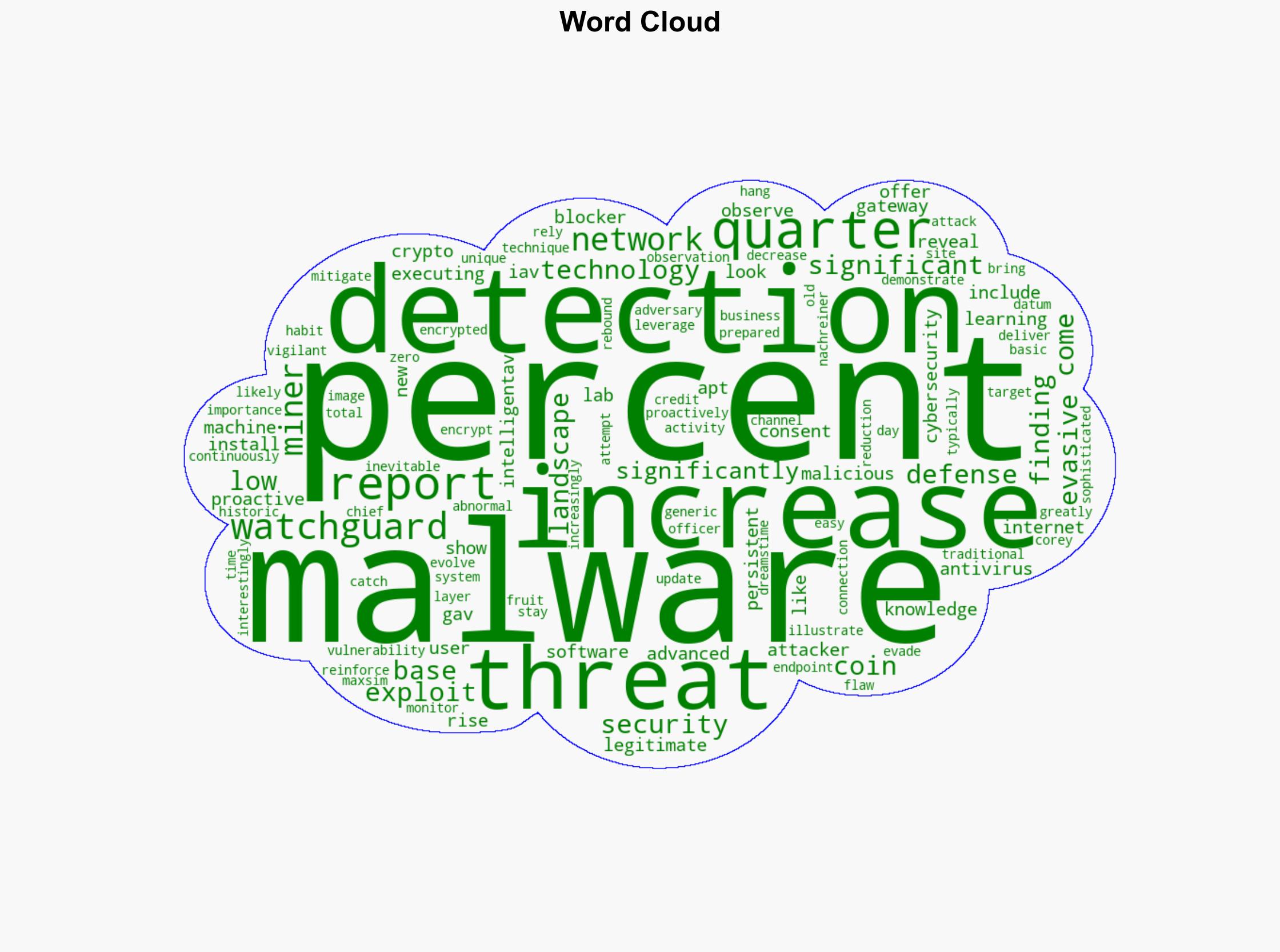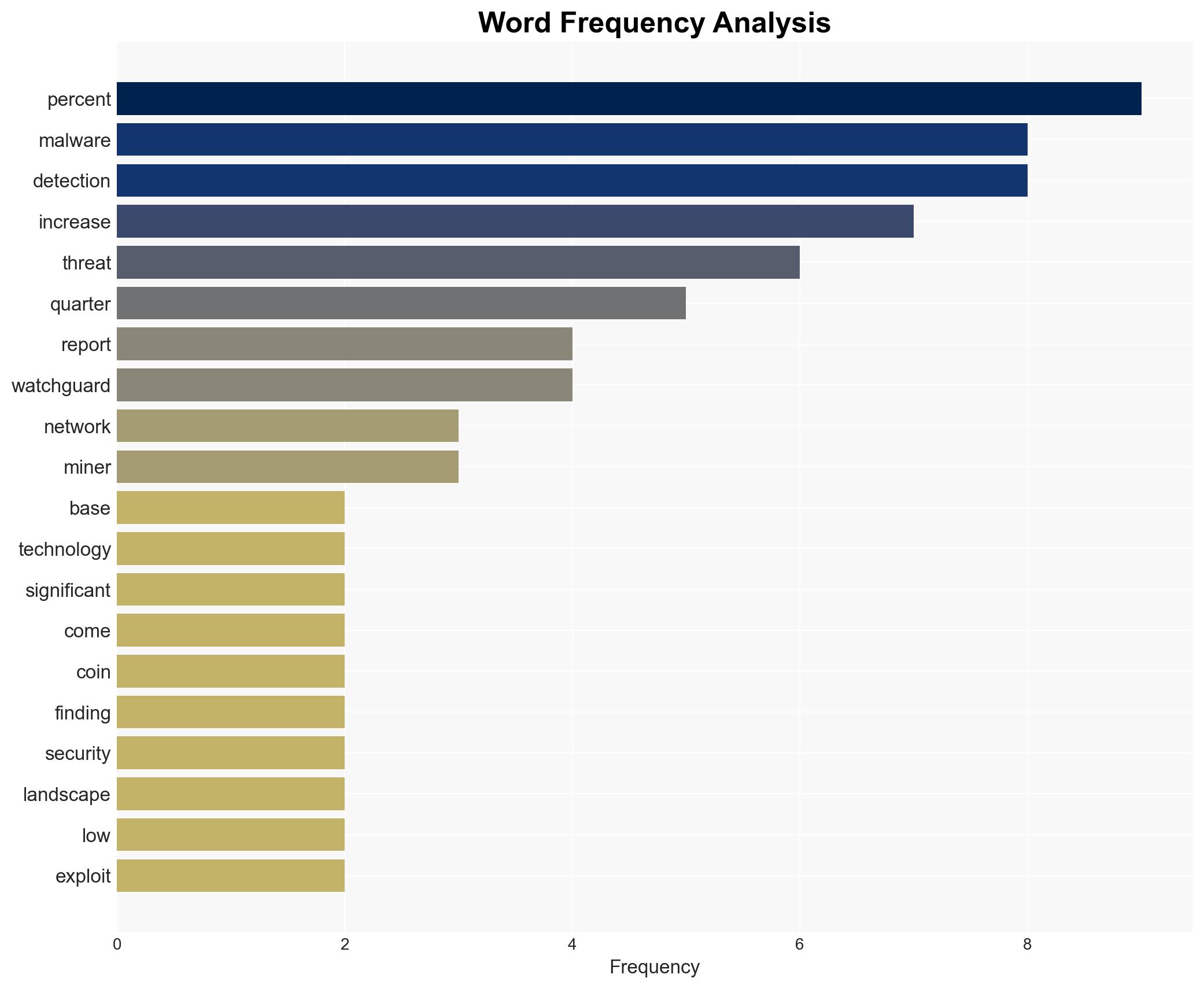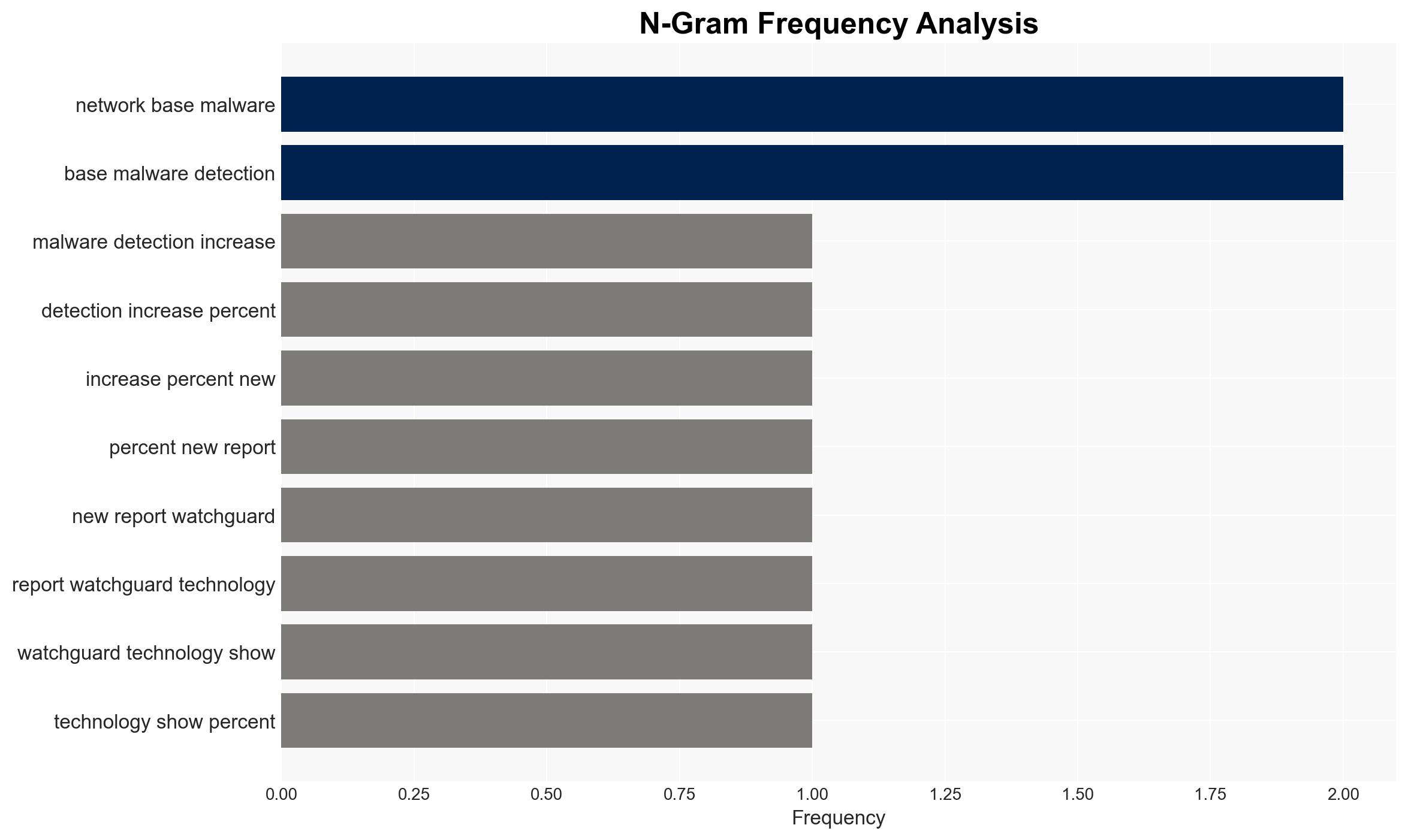Network-based malware detections increase 94 percent – BetaNews
Published on: 2025-04-10
Intelligence Report: Network-based Malware Detections Increase 94 Percent – BetaNews
1. BLUF (Bottom Line Up Front)
The latest report from WatchGuard Technologies indicates a significant 94 percent increase in network-based malware detections in Q4 2024. Key findings highlight a 315 percent surge in proactive machine learning detections, a 141 percent increase in crypto miner detections, and a rebound of zero-day malware to 53 percent. The report emphasizes the need for vigilant cybersecurity practices, including system updates and layered defenses, to mitigate these evolving threats.
2. Detailed Analysis
The following structured analytic techniques have been applied for this analysis:
General Analysis
The report reveals a dynamic threat landscape where attackers exploit both traditional vulnerabilities and advanced evasive techniques. The substantial rise in network-based malware and crypto miners suggests a shift towards more sophisticated and persistent threats. The decrease in unique malware threats by 91 percent indicates a reduction in targeted attacks, with a focus on generic malware distribution. This trend underscores the importance of proactive and adaptive cybersecurity measures.
3. Implications and Strategic Risks
The increase in network-based malware poses significant risks to national security, regional stability, and economic interests. The reliance on encrypted channels for malware delivery complicates detection and mitigation efforts, potentially leading to increased data breaches and financial losses. The resurgence of zero-day malware highlights vulnerabilities in existing defense mechanisms, necessitating enhanced threat intelligence and response strategies.
4. Recommendations and Outlook
Recommendations:
- Implement comprehensive system updates and patch management to address known vulnerabilities.
- Adopt advanced threat detection technologies, including machine learning and AI-driven solutions.
- Enhance regulatory frameworks to enforce stringent cybersecurity standards across industries.
- Promote organizational changes to prioritize cybersecurity awareness and training programs.
Outlook:
Best-case scenario: Organizations implement robust cybersecurity measures, significantly reducing the impact of malware threats and enhancing overall security posture.
Worst-case scenario: Failure to adapt to evolving threats results in widespread data breaches and economic disruptions, undermining trust in digital infrastructures.
Most likely outcome: Continued adaptation and investment in cybersecurity technologies will mitigate some risks, but persistent threats will require ongoing vigilance and innovation.
5. Key Individuals and Entities
The report references Corey Nachreiner from WatchGuard Technologies. The organization, WatchGuard Technologies, plays a pivotal role in cybersecurity threat analysis and reporting.





